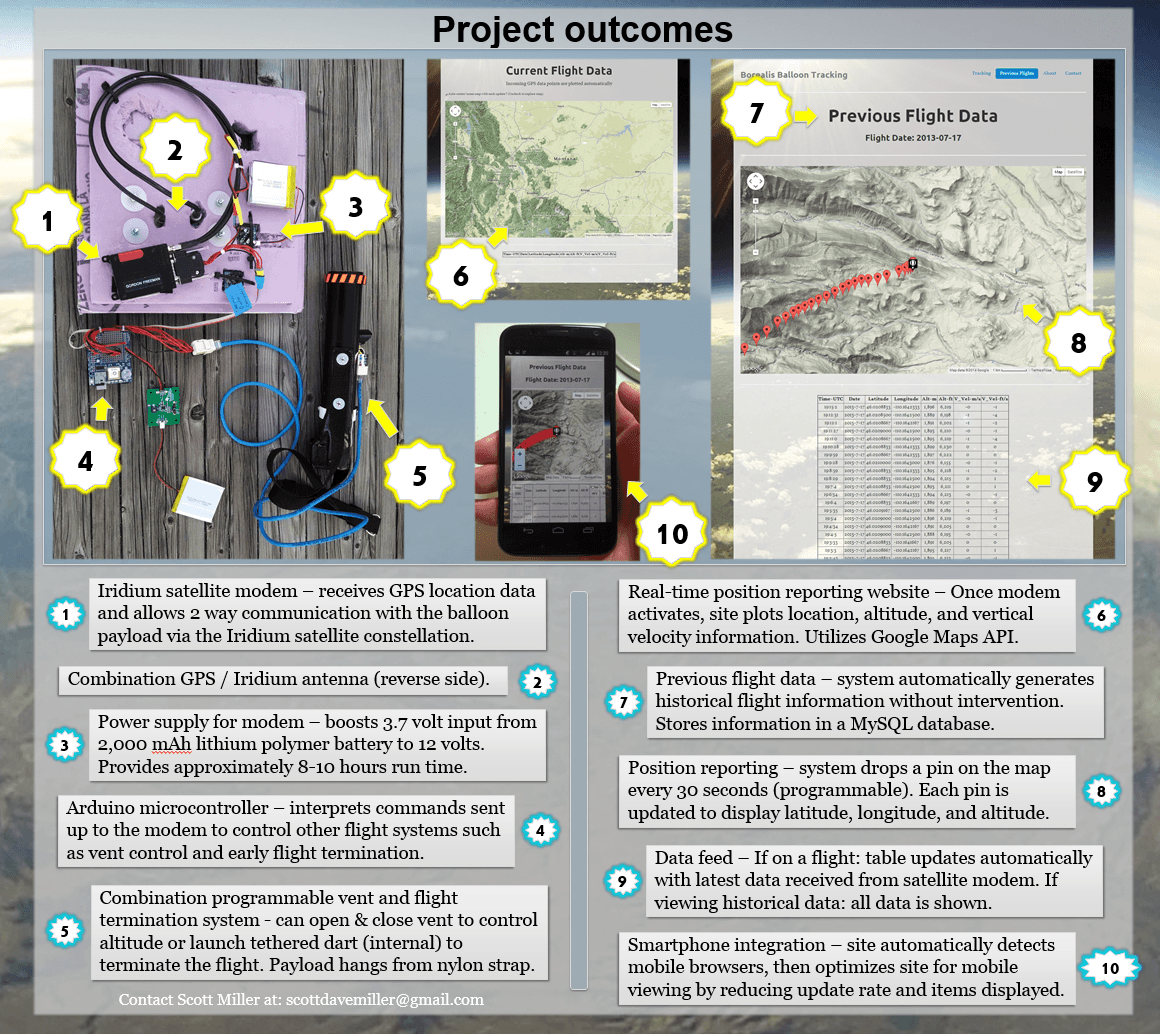Project Proposal
Weather Balloon Altitude Control and Cross Payload Wireless Communication
University level ballooning programs and stations that collect meteorological sounding data typically use relatively inexpensive latex weather balloons to transport their payloads to high altitudes. These balloons are made to fly to a high altitude and then burst, providing no control over the duration of flight and the altitude of data collection. For longer duration flights, zero pressure balloons are typically used. These balloons are many times more expensive than latex weather balloons. The goal of this project is to develop a low cost alternative to zero pressure balloons that will still provide neutrally buoyant flight. To accomplish this goal we will develop a valve that is user controlled that can be inserted into the neck of the latex balloon, then can be opened to vent helium and therefore control the altitude and duration of the flight.
The mechanical portion of this project will consist of a flow tube that will be connected to the fill nozzle. This flow tube will feature a mechanical gate vent system to allow Helium to be vented from the balloon during flight. The mechanical valve gate will be located at the bottom of the flow tube. this device will also have a fill port that will interface with the fill station, to allow the balloon to be filled with Helium after attachment to the device. The circular valve gate will actuated by a small motor, which will be controlled by the onboard microcontroller.
The electrical portion of the project will consist of multiple control and wireless communication systems working together to give the user control of the flight and facilitate various in-flight experiments. One control system will be connected to the mechanical valve assembly which will control the motor which opens and closes the valve, wireless communication with the main command capsule, and reads various sensors. A second control system in the main command capsule will act as the main communication and control hub for the flight system. This module will consist of a microprocessor which will wirelessly control the valve system and interface with the users onboard long range tracking and or communication system. Research will be performed on which microprocessors and wireless protocol will best suit the project. Custom printed circuit boards and supporting electronics will be designed for each module.
Previous work
We've successfully prototyped a larger version of the valve
While participating in the Montana Space Grant Consortium BOREALIS internship program over the last two summers (2013 & 2014), we've completed work on a larger version of a helium valve. The below diagram explains how our prior system works.

Our primary challenges with this project will be to miniaturize the valve mechanics, electronics and include wireless connectivity (replacing the blue cable in the diagram above).